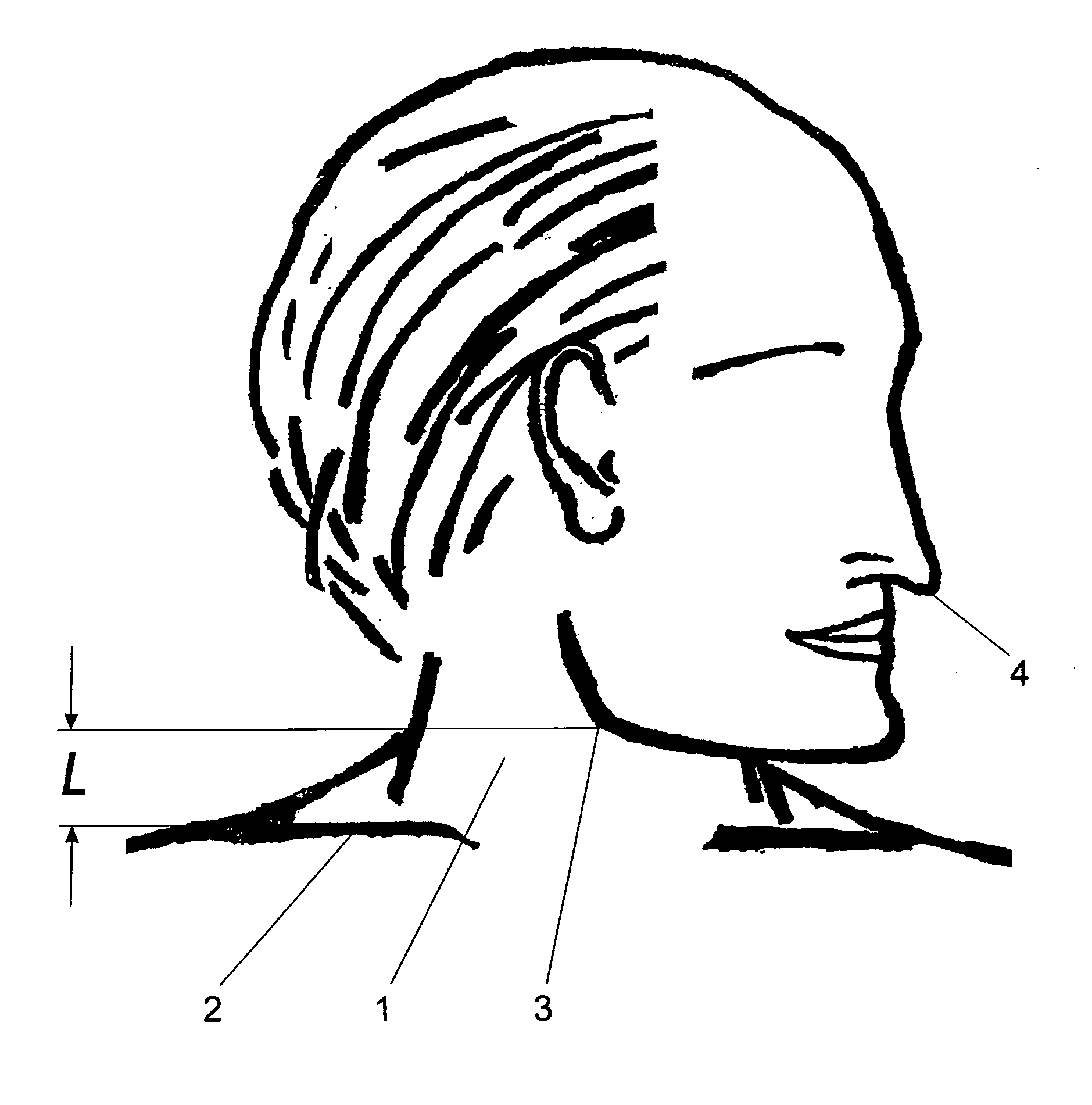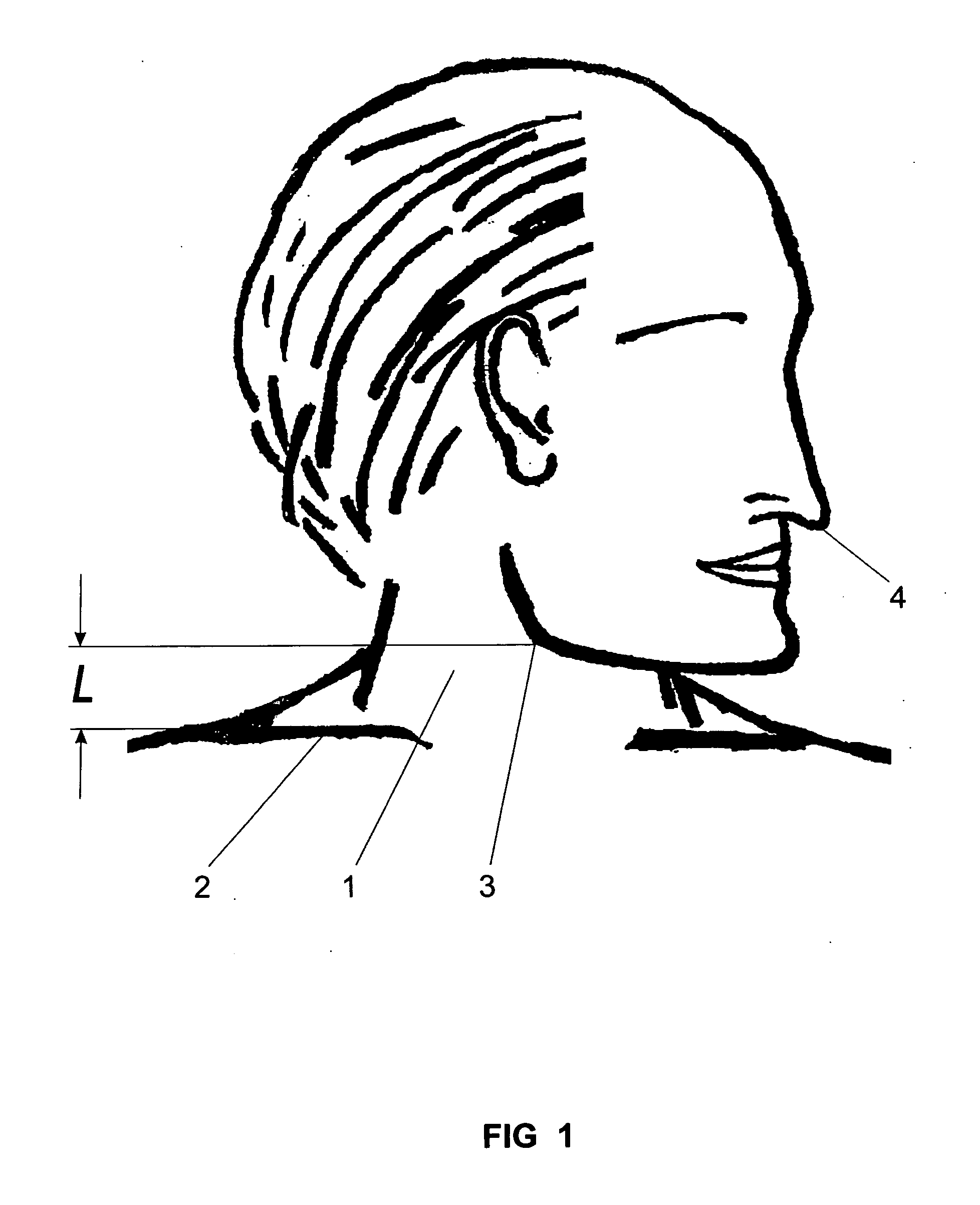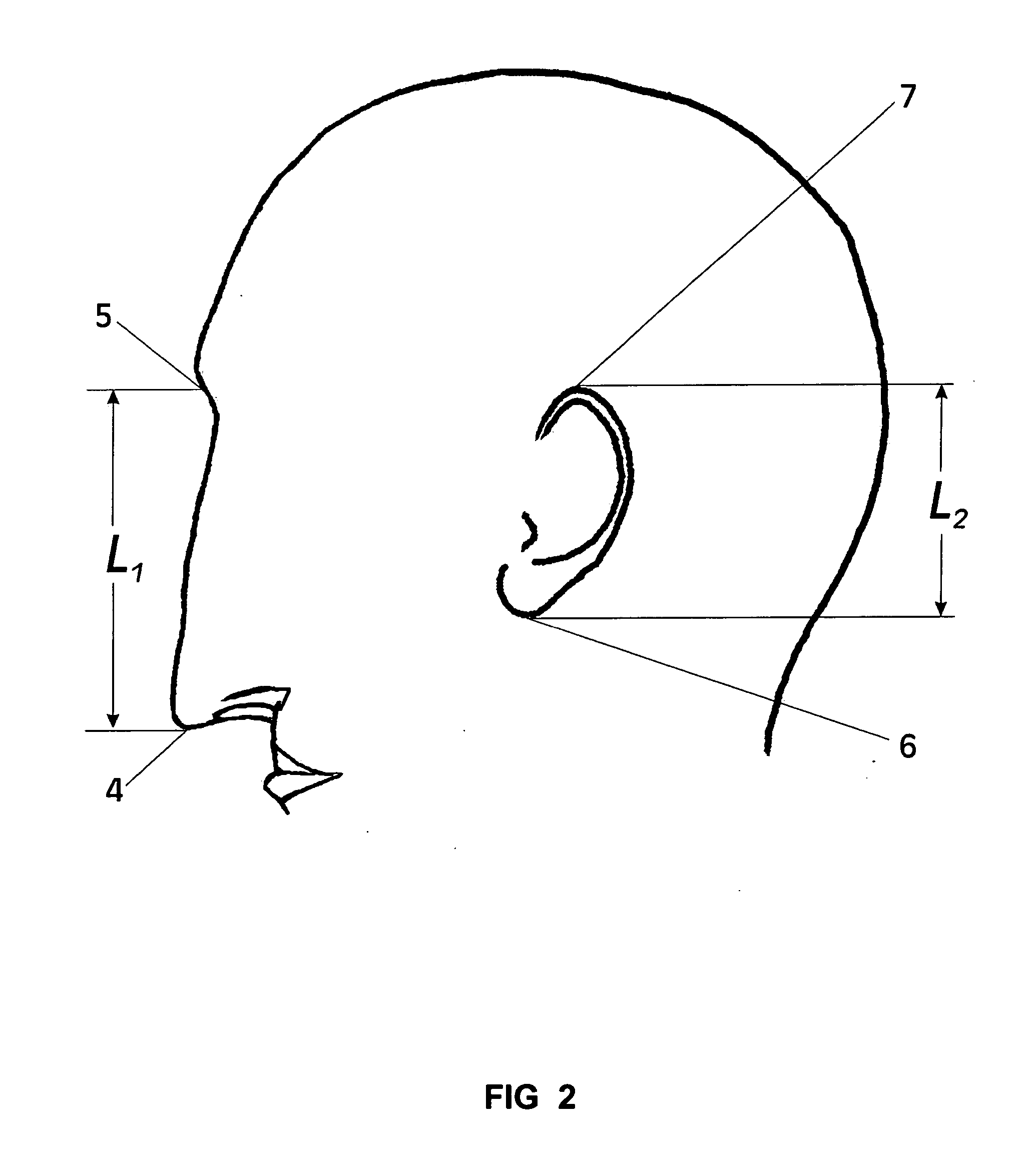Method for prognostication the behavior of a man and/or type of his/her activity and also for identification of his/her personality
- Summary
- Abstract
- Description
- Claims
- Application Information
AI Technical Summary
Benefits of technology
Problems solved by technology
Method used
Image
Examples
example no.1
EXAMPLE NO. 1
Individual No. 1—a Short-Neck Phenotype
[0050] Neck 1 length L was measured as the distance from collarbone 2 to lower jawbone bend 3 (FIG. 1). L was found to be somewhat shorter than 7 cm. The result obtained was correlated by simulation (creating the model) with psychophysiological parameters of the neck 1 functions. From physiology standpoint, a short-neck individual has short neck arteries. The neck artery functions as a buffer system, which softens the impact blood overshoots that are directed from the heart to the brain. In stress condition under the influence of neurohumoral factor, the intense heart contractions transfer the shock pulsatory loads to the brain via blood, since in this case the overshoots of blood from the heart are not sufficiently lessened by the buffer system of this phenotype's carotids because of their short length. Basing on the experiments carried out and the simulation performed, the authors of the invention have found that in this conditi...
example no.2
EXAMPLE NO. 2
Individual No. 2—a Long-Neck Phenotype with Relatively Long Nose Being Longer than the Ear
[0051] Neck length L (FIG. 1), nose length L1 (FIG. 2), and auricle length L2 (FIG. 2) were measured. The nose length Li was measured as the distance from the nose tip 4 to the articulation point 5 of nose bridge and superciliary arch. The auricle length L2 was measured as the distance from the lower point 6 of ear lobe to the upper point 7 of auricle. According to measuring results, the neck length L was somewhat longer than 13 cm (the long-neck phenotype), the nose length L1 equaled 10 cm (the long-nose phenotype), and the auricle length L2 equaled 7 cm. The nose length L1 was compared with the auricle length L2. The nose was found to be about 3 cm longer than the ear, i.e. the nose length L1 manifestly exceeded the auricle length L2. By their psychophysiological properties long-neck individuals have longer neck arteries. The neck arteries function as buffer system, which soften...
example no.3
EXAMPLE NO. 3.
Individual No. 3—the Phenotype with a Relatively Long Neck, Poor Developed Mixing Cavities of the Nose, and Specifically-Shaped Ear
[0052] Neck length L (FIG. 1), nose (FIG. 3) and ear (FIG. 4, FIG. 5) parameters were measured. The neck length L was found to be relatively long- exceeding 14 cm. Measuring of the nose parameters had shown that the phenotype investigated had poor developed mixing cavities 8 of nose, i.e. thin and sharp nose end part 9 (FIG. 3). Measurements of the nose are carried out on the “segment” of the end part 9 of the nose which is cut off by the secant plane A-A1, passing through the mixing cavities 8 at a distance of 4-15 mm deep from the tip 4 of the nose (FIG. 3), the distance depending upon the age and the individual parameters of the person. This phenotype also had specifically-shaped ears 10 (FIG. 4). The measurements of ear were made by modelling (simulating) it on a plane with the subsequent acoustic-frequency scanning the ear phenotype l...
PUM
 Login to View More
Login to View More Abstract
Description
Claims
Application Information
 Login to View More
Login to View More - R&D
- Intellectual Property
- Life Sciences
- Materials
- Tech Scout
- Unparalleled Data Quality
- Higher Quality Content
- 60% Fewer Hallucinations
Browse by: Latest US Patents, China's latest patents, Technical Efficacy Thesaurus, Application Domain, Technology Topic, Popular Technical Reports.
© 2025 PatSnap. All rights reserved.Legal|Privacy policy|Modern Slavery Act Transparency Statement|Sitemap|About US| Contact US: help@patsnap.com



